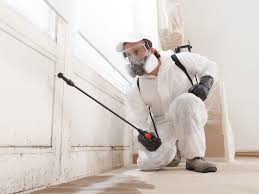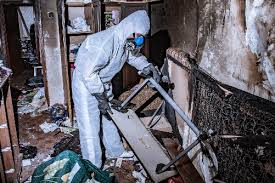In a humid and rainfall-prone country like Singapore, waterproofing is one of the most essential systems in any building. Whether it’s installed in bathrooms, basements, balconies, or rooftops, effective waterproofing is meant to block external moisture and keep internal structures dry. However, there’s an often-overlooked factor that can silently sabotage even the best waterproofing solutions: poor ventilation.
Many homeowners believe that once a waterproofing membrane is in place, the job is done. But without adequate airflow, moisture generated from within the building can accumulate, leading to mould growth, dampness, and eventually, structural damage. This article explores how poor ventilation can undermine waterproofing protection and why involving a qualified Waterproofing Specialist in Singapore is critical in resolving this issue.
Understanding the Role of Waterproofing
Before diving into the impact of ventilation, it’s important to clarify what waterproofing does and how it functions in buildings.
Waterproofing is the process of making surfaces resistant to water ingress. Common areas include:
- Bathroom floors and walls
- Balconies and planter boxes
- External walls and roofs
- Wet kitchens and utility rooms
- Basements and underground structures
Waterproofing membranes, sealants, and coatings prevent moisture from entering through structural elements. However, these systems are designed to protect against external water sources like rain or water splashes—not internal humidity or condensation. That’s where ventilation becomes vital.
How Poor Ventilation Affects Moisture Levels
Ventilation is the controlled exchange of indoor air with fresh air from outside. It helps regulate temperature, remove excess humidity, and control indoor air quality.
Without proper ventilation:
- Moisture accumulates from everyday activities such as showering, cooking, or laundry.
- Humidity rises, especially in enclosed areas with no airflow.
- Condensation forms on cold surfaces, including walls, ceilings, and windows.
- Stale air stagnates, allowing bacteria and mould to thrive.
Even if your home is fully waterproofed, the buildup of internal moisture can bypass waterproofing layers by creating damp conditions on the surface side—not from behind the walls, but from within the room itself.
A Waterproofing Specialist in Singapore will often assess not just the waterproofing layers, but also whether the space is properly ventilated to prevent this issue.
The Connection Between Ventilation and Waterproofing Performance
Waterproofing systems are built to resist direct water contact. However, they are not immune to the effects of condensation or prolonged dampness. Here’s how poor ventilation undermines waterproofing:
1. Promotes Mould and Mildew Growth
Stagnant, humid air creates an ideal environment for mould spores to settle and spread. These fungi can colonize surfaces even if they are waterproofed, feeding off dust, soap residue, and moisture. Mould can appear in tile grout, sealant edges, ceilings, and even on waterproof paint.
Result:
The presence of mould creates the illusion of waterproofing failure and reduces indoor air quality, affecting health and comfort.
2. Causes Sealant and Coating Degradation
Silicone sealants and protective coatings in waterproofed areas rely on dry, stable conditions to last. In high-humidity environments, these materials soften, peel, or detach prematurely.
Result:
Joints around sinks, bathtubs, and corners begin to leak, and water seeps into sublayers—compromising the waterproofing.
3. Increases Hydrostatic Pressure in Confined Spaces
In areas like basements or utility rooms, a lack of ventilation can trap humidity within walls. When this trapped air condenses, it creates internal hydrostatic pressure on the waterproofed surfaces.
Result:
Over time, waterproofing membranes may blister or delaminate under the stress, allowing water ingress.
4. Misleads Diagnosis of Waterproofing Failures
Without proper ventilation, moisture-related symptoms can mimic waterproofing failure—such as peeling paint, bubbling plaster, or water spots. This makes it difficult to determine whether the problem lies with the waterproofing system or the air quality.
Result:
Homeowners might spend money on unnecessary waterproofing repairs when the true solution is improving airflow.
Key Areas Where Ventilation and Waterproofing Must Work Together
Bathrooms
Bathrooms are the most moisture-heavy zones in any home. Showering, hot water, and poor drying can saturate the air quickly.
Best Practices:
- Install exhaust fans and run them during and after bathing.
- Open windows when possible.
- Wipe down wet surfaces to prevent condensation buildup.
- Use mould-resistant paints and sealants.
Kitchens and Utility Rooms
Cooking, dishwashing, and laundry all release steam into the air. If not ventilated, this steam lingers and settles on surfaces.
Best Practices:
- Install range hoods over cooking stoves.
- Ensure dryers are vented outside.
- Maintain clear airflow through windows or ventilation grilles.
Basements and Store Rooms
Enclosed and often underground, these areas have little natural airflow. Combined with humidity from the ground, they are high-risk for dampness.
Best Practices:
- Use mechanical ventilation or dehumidifiers.
- Apply breathable waterproofing systems that allow vapour escape.
- Ensure that storage items do not block airflow.
Balconies and Planter Boxes
Though exposed to the outdoors, covered balconies can trap humidity, especially after rain or plant watering.
Best Practices:
- Allow gaps between balcony enclosures and walls.
- Avoid overwatering plants.
- Ensure floor drains are unobstructed and cleaned regularly.
How to Improve Ventilation in Waterproofed Areas
Improving airflow is often the most cost-effective and reliable way to extend the life of your waterproofing systems. Here are effective solutions:
1. Mechanical Exhaust Systems
Install exhaust fans in bathrooms, kitchens, and utility rooms. Choose models with humidity sensors or timers for efficiency.
2. Natural Cross-Ventilation
Where possible, open windows or air vents on opposite sides of the room to allow fresh air circulation.
3. Dehumidifiers
In especially humid rooms or those without external walls, dehumidifiers help reduce moisture levels efficiently.
4. Ventilation Grilles
Install passive air grilles in doors or walls of enclosed areas to facilitate air exchange between rooms.
5. Keep Doors Open When Safe
Leaving bathroom or kitchen doors ajar after use allows moisture to dissipate into larger living areas where it won’t accumulate as quickly.
For large buildings, a Waterproofing Specialist in Singapore may coordinate with HVAC engineers to integrate ventilation planning into moisture control strategies.
Signs That Poor Ventilation Is Impacting Waterproofing
Recognizing the early symptoms can help prevent long-term damage. Look out for:
- Persistent condensation on walls or mirrors
- Mould forming despite a recent waterproofing job
- Peeling paint, especially near the ceiling
- Rusted fittings or corroded light fixtures
- Musty odours that don’t go away with cleaning
- Dampness in wardrobes or drawers near wet areas
If you notice any of these signs, it’s important to consult both a ventilation expert and a Waterproofing Specialist in Singapore. They can identify whether the issue is surface-level, atmospheric, or structural.
Benefits of Coordinating Ventilation with Waterproofing
Ensuring both systems are aligned provides the following long-term advantages:
- Enhanced lifespan of waterproofing materials
- Reduced likelihood of water damage or seepage
- Healthier indoor air quality and reduced mould risk
- More energy-efficient home climate control
- Lower long-term maintenance and repair costs
Waterproofing and ventilation should be treated as complementary systems in any property, not as isolated installations.
Role of a Waterproofing Specialist in Singapore
A Waterproofing Specialist in Singapore brings both technical skill and localized climate understanding. In addition to applying membranes and sealants, they:
- Conduct on-site moisture assessments
- Advise on ventilation compatibility with waterproofing layers
- Recommend breathable versus non-breathable systems
- Identify mould-prone areas and provide prevention strategies
- Work alongside builders and designers to ensure long-term moisture control
In Singapore’s urban, high-humidity environment, this comprehensive approach is crucial to preventing recurring issues.
Conclusion
Waterproofing is vital—but it’s only part of the solution. Without proper ventilation, even the most advanced waterproofing systems can fail over time. Moisture accumulation from indoor activities, poor air circulation, and high humidity levels will eventually compromise membranes, sealants, and protective coatings.
Homeowners and building managers should recognize the importance of integrating airflow strategies into their waterproofing plans. From exhaust fans to dehumidifiers, the right ventilation makes a significant difference.
For the best results, collaborate with a reputable Waterproofing Specialist in Singapore who understands how to balance external protection with internal humidity control. This partnership ensures that your home or building remains dry, healthy, and structurally sound for years to come.



